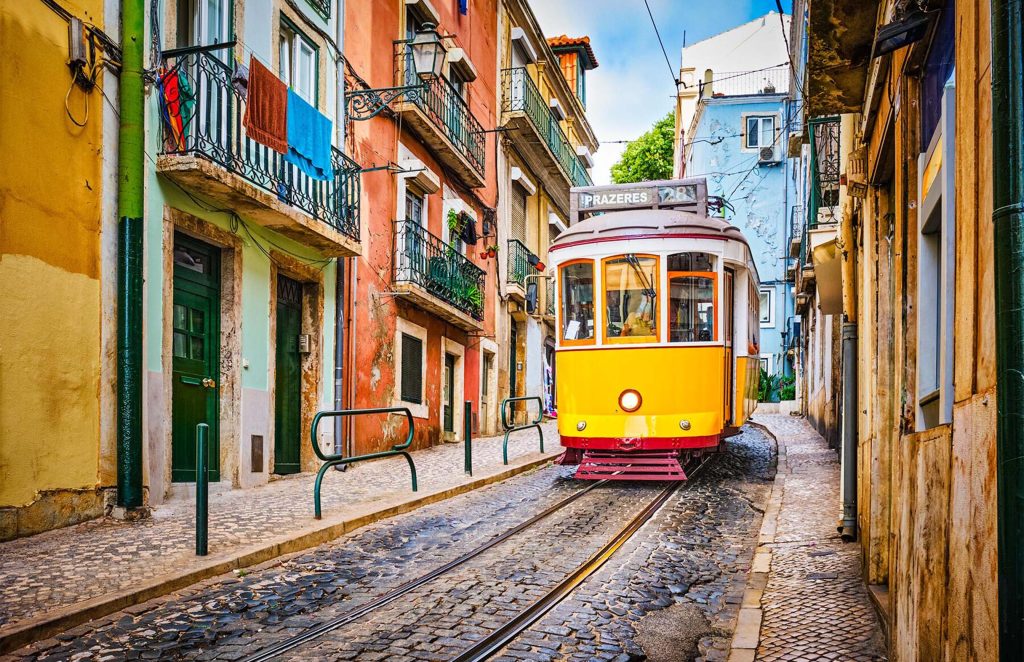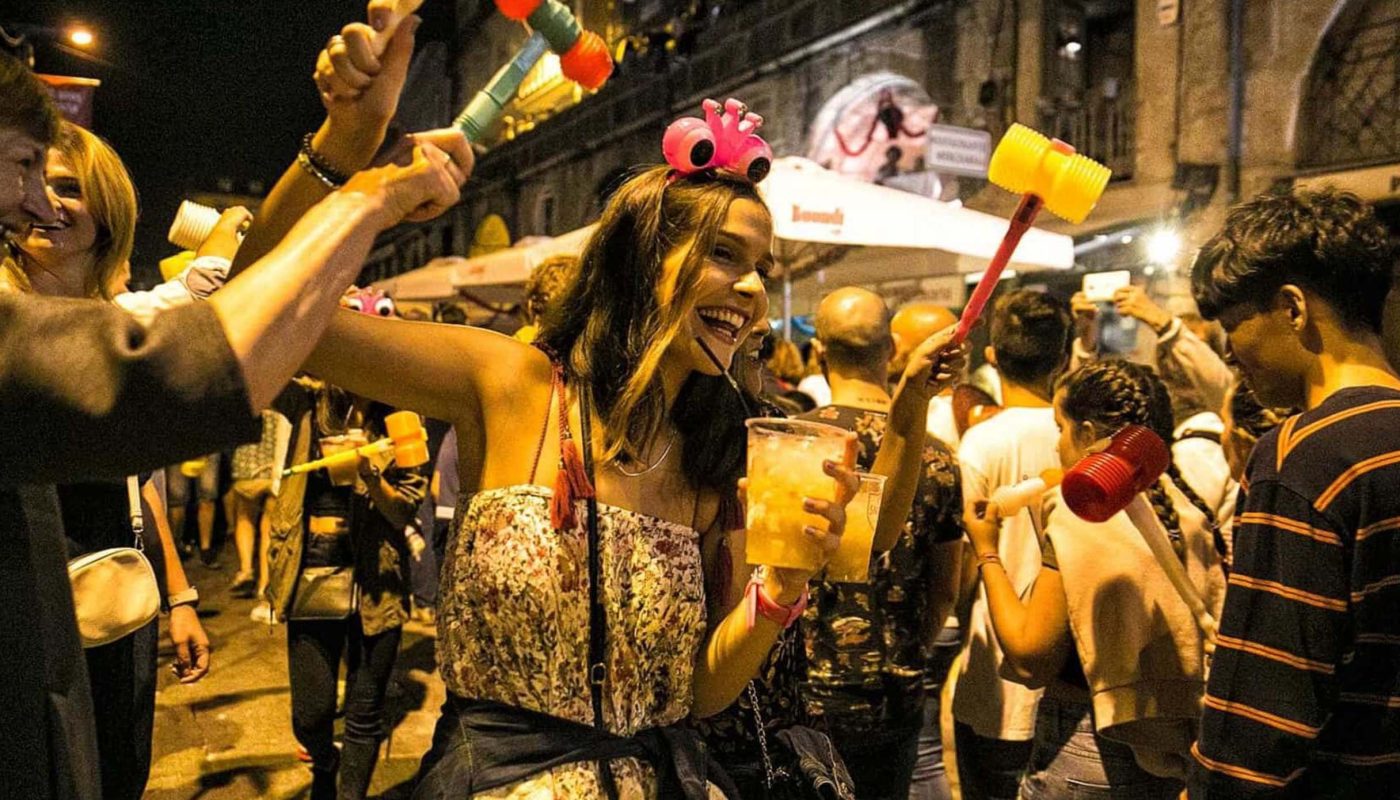Lisbon, the vibrant capital city of Portugal, is a captivating blend of ancient history, cosmopolitan culture, and breathtaking natural beauty. Nestled on the shores of the Atlantic Ocean, Lisbon is renowned for its picturesque hillsides, charming neighborhoods, and stunning architecture.
Give Your Tech a Second Life
Give your devices a second life with Gazelle.com
Sell your old tech or buy certified pre-owned phones and laptops — saving money while reducing e-waste.
Smart for you. Good for the planet.
The city’s rich history is evident in its historic landmarks and cultural heritage. From the imposing São Jorge Castle, which offers panoramic views of the city, to the majestic Jerónimos Monastery, a masterpiece of Manueline architecture, Lisbon’s architectural treasures reflect centuries of influence from Moorish, Gothic, and Baroque styles.
Travel Tips: Dressing for the Adventure
Before we embark on our Lisbon adventure, let’s talk about travel attire. Lisbon’s climate is mild and temperate, with warm summers and mild winters. I recommend packing lightweight, breathable clothing for exploring the city during the day, along with comfortable walking shoes for navigating its hilly streets. Don’t forget to pack a light jacket or sweater for cooler evenings, especially if you plan to enjoy Lisbon’s vibrant nightlife.
Cultural Etiquette: Embracing Lisbon’s Time-Honored Traditions
As we immerse ourselves in the vibrant tapestry of Lisbon’s culture, it’s essential to familiarize ourselves with the local customs and etiquette that shape daily life in this enchanting city.
One of the hallmarks of Portuguese culture is its strong emphasis on politeness and respect. When interacting with locals, a warm greeting goes a long way. Whether it’s a cheerful “bom dia” (good morning), “boa tarde” (good afternoon), or “boa noite” (good evening), these simple gestures of acknowledgment demonstrate courtesy and goodwill.
Another aspect of Portuguese etiquette is the concept of personal space. While Lisbon is a bustling metropolis, locals tend to value a certain degree of personal distance during social interactions. It’s essential to be mindful of this cultural norm and respect the boundaries of others, particularly in crowded spaces or on public transportation.
When dining out in Lisbon, it’s customary to wait to be seated rather than choosing your own table. Once seated, it’s polite to keep your elbows off the table and refrain from speaking loudly or engaging in disruptive behavior. Additionally, it’s considered rude to snap your fingers or whistle to get a server’s attention. Instead, catch their eye politely or raise your hand to signal that you need assistance.
In terms of dining etiquette, Portuguese meals are often a leisurely affair, with multiple courses and ample time for conversation. It’s customary to wait until everyone at the table has been served before beginning your meal and to keep pace with the rest of the group when eating.
When it comes to tipping in Lisbon, it’s customary to leave a small gratuity of 5-10% if service is not included in the bill. While tipping is not mandatory, it’s appreciated as a gesture of appreciation for good service.
It’s important to remember that Lisbon is a city with a rich and diverse cultural heritage, influenced by centuries of history and tradition. By approaching interactions with an open mind and a respectful attitude, you’ll not only gain a deeper appreciation for Lisbon’s cultural tapestry but also forge meaningful connections with the people who call this city home.
Currency Exchange: Navigating Lisbon’s Financial Landscape
The official currency of Portugal is the Euro (EUR), and while many establishments accept credit cards, it’s always a good idea to carry some cash for smaller purchases and transactions. Currency exchange can be done at banks, exchange offices, or ATMs (known as “multibancos” in Portugal), which are widely available throughout the city.
Sightseeing: Must-Visit Attractions in Lisbon

1. Belém Tower (Torre de Belém): A UNESCO World Heritage site, Belém Tower is a symbol of Portugal’s Age of Discovery. Marvel at its intricate Manueline architecture and panoramic views of the Tagus River.
2. Jerónimos Monastery (Mosteiro dos Jerónimos): Another architectural masterpiece in Belém, the Jerónimos Monastery is renowned for its stunning cloisters and ornate decoration. Don’t miss the chance to visit the nearby Pasteis de Belém bakery for a taste of Portugal’s famous custard tarts.
3. Castelo de São Jorge (São Jorge Castle): Perched atop the highest hill in Lisbon, São Jorge Castle offers commanding views of the city below. Explore its medieval ramparts, lush gardens, and archaeological sites for a glimpse into Lisbon’s storied past.
4. Alfama District: Lose yourself in the winding streets and alleys of Lisbon’s oldest neighborhood, Alfama. Discover hidden treasures around every corner, from historic churches and charming plazas to traditional Fado bars and artisan workshops.
Culinary Delights: Exploring Lisbon’s Street Food Scene
No visit to Lisbon would be complete without sampling its delectable street food offerings. From savory pastries to fresh seafood, the city is a food lover’s paradise. Be sure to try:
– Pastel de Nata: Portugal’s famous custard tart, best enjoyed warm with a dusting of cinnamon and powdered sugar.
– Bifana: A traditional Portuguese sandwich made with thinly sliced pork marinated in garlic and spices, served on a crusty bread roll.
– Ginjinha: A sweet cherry liqueur served in a chocolate cup, a popular local delicacy.
Safety Tips: Navigating Lisbon’s Streets with Confidence
While Lisbon is generally a safe city for travelers, it’s essential to exercise caution, especially in crowded areas and tourist hotspots. Keep your belongings secure and be wary of pickpockets, particularly in crowded markets and on public transportation. It’s also advisable to stay hydrated and wear sunscreen during the summer months, as temperatures can soar.
Transportation: Getting Around Lisbon

Lisbon boasts a comprehensive and efficient public transportation network, providing visitors with a variety of convenient options for getting around the city and beyond. From trams and buses to the iconic yellow funiculars and modern metro system, there’s a mode of transportation to suit every traveler’s needs and preferences.
1. Metro: The Lisbon Metro is the backbone of the city’s public transportation system, offering fast, reliable service to key destinations throughout Lisbon and its surrounding areas. With four color-coded lines (blue, green, red, and yellow), the metro provides easy access to popular attractions, neighborhoods, and transportation hubs. Tickets can be purchased from automated machines at metro stations or from ticket offices, and fares are calculated based on the number of zones traveled.
2. Trams: Lisbon’s historic trams are not only a charming mode of transportation but also an iconic symbol of the city. Tram 28, in particular, is a favorite among tourists, winding its way through the narrow streets of Alfama, Graça, and Baixa, passing by some of Lisbon’s most famous landmarks along the way. While Tram 28 can get crowded, especially during peak hours, it offers a scenic journey through Lisbon’s historic neighborhoods.
3. Buses: Lisbon’s extensive bus network provides comprehensive coverage of the city and its outskirts, making it easy to reach destinations not serviced by the metro or tram lines. Buses are equipped with air conditioning and comfortable seating, and routes are clearly marked at bus stops and on route maps. Visitors can purchase tickets from onboard ticket machines or use a rechargeable Viva Viagem card for seamless travel on buses, trams, and the metro.
4. Funiculars and Elevators: Lisbon is known for its hilly terrain, and the city’s funiculars and elevators provide a convenient way to navigate its steep slopes. The Elevador de Santa Justa, a wrought-iron elevator dating back to the 19th century, offers stunning views of the city from its observation deck. Meanwhile, the Bica and Glória funiculars transport passengers up and down Lisbon’s picturesque hillsides with ease.
5. Taxis and Ride-Sharing Services: For those seeking a more personalized travel experience, taxis and ride-sharing services are readily available throughout Lisbon. Taxis can be hailed from designated taxi stands or booked in advance, while ride-sharing apps like Uber and Bolt offer convenient options for getting around the city quickly and affordably. Be sure to confirm the fare with the driver before beginning your journey, and always opt for licensed taxis and reputable ride-sharing providers.
SIM Cards and Connectivity: Staying Connected in Lisbon
Stay connected during your time in Lisbon by purchasing a local SIM card from one of the city’s many telecom providers. These can be easily obtained from convenience stores, kiosks, or mobile phone shops, and offer affordable data and calling plans for travelers.
Itinerary Planning: Crafting Your Perfect Lisbon Experience
When planning your Lisbon itinerary, be sure to allocate plenty of time for leisurely strolls through the city’s charming neighborhoods, indulgent meals at local eateries, and spontaneous discoveries around every corner. Don’t forget to leave room for relaxation and rejuvenation, whether it’s sipping coffee at a sidewalk café or soaking up the sun at one of Lisbon’s beautiful beaches.
Budgeting: Making the Most of Your Lisbon Experience
Traveling on a budget doesn’t mean sacrificing quality or comfort. By opting for budget-friendly accommodations, dining at local eateries, and taking advantage of free or low-cost attractions, you can stretch your travel budget further and make the most of your Lisbon experience. Consider purchasing a Lisbon Card, which offers free or discounted admission to many of the city’s top attractions, as well as unlimited access to public transportation.
Insurance: Ensuring Peace of Mind
Lastly, don’t forget to invest in travel insurance before embarking on your Lisbon adventure. While it may seem like an unnecessary expense, travel insurance provides invaluable peace of mind in the event of unforeseen circumstances such as medical emergencies, trip cancellations, or lost luggage. Choose a comprehensive policy that covers all aspects of your trip, including medical expenses, trip interruption, and emergency evacuation.
From its historic landmarks and cultural treasures to its culinary delights and warm hospitality, Lisbon has something to offer every traveler.



